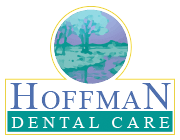
We rarely worry about gum disease the way we do cavities. Because tooth decay has more obvious symptoms, it’s the more talked-about disease. But healthy teeth are nothing without healthy gums. If your gum line succumbs to infection, it won’t be able to support your smile.
You may be thinking: “Taking care of my gums? Dealing with my teeth is enough!” Don’t worry; periodontal care isn’t complicated. Most of the oral hygiene steps you already take are working to keep your gums healthy and strong. But the signs of ailing gums differ from the signs of tooth decay, and so does treatment. Learn more about staying on top of gingivitis and periodontal disease so that you can take action before your gums begin to suffer.
What Causes Periodontal Disease?
Gum disease takes hold when your oral hygiene falters. Plaque begins to build up on teeth and can irritate your gums. If that plaque continues to adhere, it will harden and become tartar, which is far more difficult to remove. Once plaque and tartar gather between your gums and teeth, it forms periodontal pockets. At this point, your mouth is experiencing full-blown periodontal disease, an infection of the gums.
Know Your Risk
Some risk factors can make you more susceptible to gum disease. While they don’t mean you will definitely get gum disease (nor does not having them mean you are 100% safe), make sure you’re aware of potential risk factors:
- Tobacco use
- Age
- Genetic predisposition
- High stress levels
- Certain medications
- Bruxism
- Poor nutrition
- Other diseases that cause inflammation
What to Look For
Gum disease can be “silent.” Sometimes symptoms won’t appear until the infection has become severe. Gingivitis is the first level of gum disease. Gingivitis refers to gum inflammation, which can occur anywhere in your mouth. Common signs of periodontal disease include:
- Red or purple gums
- Swollen, puffy gums
- Bleeding gums
- Receding gums
- Tender gums or teeth
- Loose-feeling teeth
- Sudden and ongoing bad breath
- Pockets forming between teeth and gums
- Pus or sores
- A changing bite
Get Treatment ASAP
If you notice one or more of these symptoms, it’s time to give us a call. The sooner Dr. Hoffman can tackle your gum disease, the better. As time passes, the infection reaches deeper into your gums, and the harder it is to remove the infection. The disease will also begin to cause changes to the appearance of your smile, lengthening the exposed portions of your teeth and changing your gum line.
Periodontal treatment takes a multi-pronged approach to healing your gums and reducing harmful bacteria. Treatment can include the physical removal of plaque from the teeth, tooth roots, and gums, antibiotic treatment, and, in severe cases, gum surgery. Throughout treatment, Dr. Hoffman will ensure that you are comfortable and informed of the next steps.
Home Care for Healthy Gums
Preventing periodontal disease is as simple as brushing and flossing. But the technique is very important:
- Don’t brush too hard – Overly vigorous brushing can cause the gums to become swollen and the gums to recede.
- Brushing correctly – Carefully brushing your teeth and the gum line will keep the area clean and prevent and even reverse gum disease. It’s important that you brush even if your teeth and gums are feeling sore – keeping your gum line clean is incredibly important.
- Floss regularly – Flossing daily removes food particles and bacteria from the gum line and is incredibly effective at combating periodontal problems.
- Use mouthwash – Mouthwash cleans the gums in places that your toothbrush and floss don’t reach.
Get Regular Exams
By scheduling regular dental exams, you give our team (and yourself) the best possible chance of keeping disease out of your life. We may want to see you more than every six months to stay on top of potential problems.
If you ever have a question about gum disease, please, contact Hoffman Dental Care. We’re here to help.




